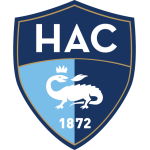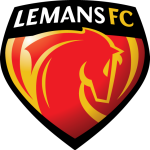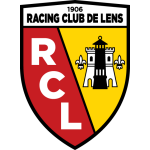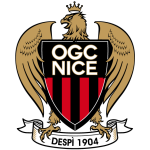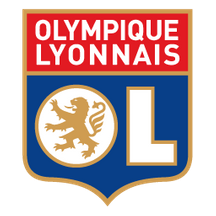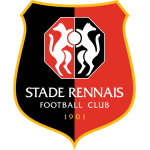French Football Teams: Complete Guide to Ligue 1, Ligue 2, and Division 1 Feminine (2025)
France is one of the most influential footballing nations in the world. From FIFA World Cup wins in 1998 and 2018, to producing world-class players like Zinedine Zidane, Thierry Henry, and Kylian Mbappé, the country's impact on the sport is massive. A major contributor to this success has been the development of talent through world-class academies like Monaco, Lyon, and PSG. Domestically, France Football follows a systemised structure. French Football consists of three main tiers: Ligue 1, Ligue 2, and Championnat National, which follows a promotion-relegation system, ensuring competitiveness across leagues. In recent years, increased investments in infrastructure, scouting, and youth football have helped to expand growth globally, with France football clubs like Paris Saint-Germain winning the 2025 UEFA Champions League.
French Football Clubs - History and Evolution of Football Teams in France
The emergence of football in France was mainly driven by the British. British residents, like students, sailors, and traders, who were living in Paris and other cities, introduced football in the country to enjoy the sport that they created. A prime example can be that of Le Havre AC. They were an “athletic” club created by British residents in 1884 to play rugby and football. A dedicated team for football was only introduced in 1894, making it the oldest football club in France. The club colours, sky blue and navy, were inspired by the Universities of Oxford and Cambridge.
The early-founded France football teams, termed as “Athletic Clubs” (clubs for multiple sports), were mainly concentrated in British communities. Initially, all competitions were organised by a general body, the Union des Sociétés Françaises de Sports Athlétiques (USFSA). Later, to bring football under a single body and to create a proper league system, the Fédération Française de Football (FFF) was formed in 1919.
French Football Pyramid
The French football pyramid is a hierarchical system of various leagues, with clubs moving up or down based on their performance. At the top of the pyramid, there are two divisions – Ligue 1 and Ligue 2, managed by Ligue de Football Professionnel (LFP). Ligue 1 is the top-flight, with Ligue 2 below it. Both leagues consist of 18 teams each. The third tier, Championnat National 1, is a semi-professional league that acts as the bridge between professional and amateur football. Below it comes the national amateur leagues - Championnat National 2 and Championnat National 3. These leagues are regionalized, with teams being divided into groups based on geography. Successful teams from each group move up the pyramid. The Fédération Française de Football (FFF) manages the Championnat National 1, National 2, and National 3. At the pyramid’s base are various regional leagues like Régional 1 and District 1, managed by local football associations. This helps to ensure that every club has a fair path across the footballing pyramid.
French Football League System
The French football league system is made up of a pyramid structure, allowing clubs to move across levels based on performance. At the top of the football system, there are two professional levels managed by the Ligue de Football Professionnel (LFP). The Premier Division is Ligue 1, with Ligue 2 below it, consisting of 18 teams each. Each season, the two lowest finishing Ligue 1 teams are relegated to Ligue 2, and the two highest finishing Ligue 2 teams are promoted to Ligue 1. The third spot is decided by a playoff between the 16th-place Ligue 1 team and a high-finishing Ligue 2 side. The third tier, Championnat National, is run by the Fédération Française de Football (FFF). Consisting of 18 teams, the top finishing teams are promoted to Ligue 2, and teams finishing lower are relegated. Below this are the amateur divisions run by FFF, Championnat National 2, and National 3, where teams are divided into regional groups. The French football league system ensures that every team gets a fair chance to ascend to the top of French football.
| Tier | League Name | No. of Teams | Governing Body | Promoted To | Relegated To |
|---|---|---|---|---|---|
| 1 | Ligue 1 | 18 | LFP | – | Ligue 2 |
| 2 | Ligue 2 | 18 | LFP | Ligue 1 | Championnat National |
| 3 | Championnat National | 18 | FFF | Ligue 2 | Championnat National 2 |
| 4 | Championnat National 2 | 112 | FFF | Championnat National | Championnat National 3 |
| 5 | Championnat National 3 | 48 | FFF | Championnat National 2 | – |
Top 10 Most Successful French Football Teams
French football clubs boast a rich history, with several clubs achieving domestic and European success. Paris Saint-Germain have been the most dominant team, culminating in the historic 2024-25 season, where they not only excelled domestically but also won their first-ever UEFA Champions League. The victory solidified their place as the most successful French team, with 55 trophies. Meanwhile, giants like Marseille, Saint-Étienne, and Lyon have cemented their place amongst the most decorated French football teams. The constant challenges amongst these clubs have shaped the competitive landscape of French Football.
Here are the Top 10 most successful Football Teams in France:
| Club | Founding Year | No. of Trophies Won |
|---|---|---|
| Paris Saint-Germain | 1970 | 55 |
| Olympique de Marseille | 1899 | 28 |
| Olympique Lyonnais | 1950 | 26 |
| AS Saint-Étienne | 1919 | 24 |
| AS Monaco | 1924 | 19 |
| Girondins de Bordeaux | 1881 | 16 |
| FC Nantes | 1943 | 16 |
| Stade de Reims | 1931 | 13 |
| Lille OSC | 1944 | 11 |
| OGC Nice | 1904 | 8 |
French Ligue 1 Teams
Ligue 1 represents the pinnacle of French football. Established in 1932, it follows the promotion-relegation system, ensuring fierce, high-stakes performance amongst the 18 best teams in France. The league is home to European giants and historic powerhouses, helping to shape French football. Ligue 1 teams include Paris Saint-Germain, the record league champions, Olympique de Marseille, the country’s only UEFA Champions League winners for years, and Olympique Lyonnais, who won seven consecutive league titles in the 2000s. Known for footballing identity and developing world-class talents, Ligue 1 remains a key fixture in the international football landscape. Let’s take a look at the 2025-26 French Ligue 1 teams:
| Team | Year Founded | City | Stadium |
|---|---|---|---|
| Angers SCO | 1919 | Angers | Raymond Kopa Stadium |
| AJ Auxerre | 1905 | Auxerre | Stade de l'Abbé-Deschamps |
| Stade Brestois 29 | 1950 | Brest | Stade Francis-Le Blé |
| Le Havre AC | 1894 | Le Havre | Stade Océane |
| RC Lens | 1906 | Lens | Stade Bollaert-Delelis |
| LOSC Lille | 1944 | Lille | Stade Pierre-Mauroy |
| FC Lorient | 1926 | Lorient | Stade du Moustoir |
| Olympique Lyonnais | 1950 | Lyon | Groupama Stadium |
| Olympique de Marseille | 1899 | Marseille | Orange Vélodrome |
| FC Metz | 1919 | Metz | Stade Municipal Saint-Symphorien |
| AS Monaco | 1919 | Monaco | Stade Louis II |
| FC Nantes | 1943 | Nantes | Stade de la Beaujoire |
| OGC Nice | 1904 | Nice | Allianz Riviera |
| Paris Saint-Germain | 1970 | Paris | Parc des Princes |
| Paris FC | 1969 | Paris | Stade Sébastien-Charléty |
| Stade Rennais FC | 1901 | Rennes | Roazhon Park |
| RC Strasbourg Alsace | 1906 | Strasbourg | Stade de la Meinau |
| Toulouse FC | 1970 | Toulouse | Stadium de Toulouse |
French Ligue 2 Teams:
Ligue 2 serves as the second tier of French football, a highly competitive league where every team has a common dream: the top flight. Like Ligue 1, Ligue 2 is governed by a system of promotion-relegation. The top two Ligue 2 teams get promoted to Ligue 1, and the third spot is decided by a playoff match between the 16th-place Ligue 1 team and a top-performing side from Ligue 2. This makes Ligue 2 games more thrilling as every game is do-or-die, serving both as a launching pad for small, ambitious clubs and a rebuilding platform for historic teams. Let’s take a deep look into the 2025-26 Ligue 2 teams:
| Team | Year Founded | City | Stadium |
|---|---|---|---|
| AC Ajaccio | 1910 | Ajaccio | Stade Michel-Moretti |
| Amiens SC | 1901 | Amiens | Stade de la Licorne |
| FC Annecy | 1927 | Annecy | Parc des Sports |
| SC Bastia | 1905 | Bastia | Stade Armand-Cesari |
| Clermont Foot 63 | 1990 | Clermont-Ferrand | Stade Gabriel-Montpied |
| USL Dunkerque | 1909 | Dunkirk | Stade Marcel-Tribut |
| Grenoble Foot 38 | 1892 | Grenoble | Stade des Alpes |
| En Avant Guingamp | 1912 | Guingamp | Stade municipal de Roudourou |
| Stade Lavallois | 1902 | Laval | Stade Francis Le Basser |
| Le Mans FC | 1985 | Le Mans | Stade Marie-Marvingt |
| Montpellier HSC | 1974 | Montpellier | Stade de la Mosson |
| AS Nancy Lorraine | 1967 | Nancy | Stade Marcel Picot |
| Pau FC | 1959 | Pau | Nouste Camp |
| Red Star FC | 1897 | Saint-Ouen-sur-Seine | Stade Bauer |
| Stade de Reims | 1931 | Reims | Stade Auguste-Delaune |
| Rodez AF | 1929 | Rodez | Stade Paul-Lignon |
| AS Saint-Étienne | 1933 | Saint-Étienne | Stade Geoffroy-Guichard |
| ES Troyes AC | 1986 | Troyes | Stade de l'Aube |
Division 1 Féminine Teams
Along with the men’s game, French football also comprises a women's football league - Division 1 Féminine. Established in 1974, to create a top-tier football league for women in France, providing a competitive environment for women's football. Organised by the Ligue féminine de football professionnel (LFFP), Division 1 Féminine serves as the premier league for women's football in France. Division 1 Féminine teams like OL Lyonnes, who have won a record 8 UEFA Champions League titles, and Paris Saint-Germain, a successful domestic side, are some teams that have put women’s football on the world map.
Let’s take a look at Division 1 Féminine teams:
| Team | Year Founded | City | Stadium |
|---|---|---|---|
| Dijon FCO Féminines | 2010 | Dijon | Stade des Poussots |
| FC Fleury 91 Féminines | 2003 | Fleury-Mérogis | Stade Auguste Gentelet |
| Le Havre AC Féminines | 2014 | Le Havre | Stade Océane |
| RC Lens Féminines | 2001 | Lens | La Gaillette |
| Montpellier HSC Féminines | 2001 | Montpellier | Stade Jules Rimet |
| FC Nantes Féminines | 2012 | Nantes | Stade Marcel-Saupin |
| OL Lyon Féminines (OL Lyonnes) | 2004 | Lyon | Groupama Stadium |
| Olympique de Marseille Féminines | 2011 | Marseille | OM Campus |
| Paris Saint-Germain Féminines | 1971 | Paris | Stade Georges Lefèvre |
| Paris FC Féminines | 1971 | Orly | Stade Robert Bobin |
| AS Saint-Étienne Féminines | 2009 | Saint-Étienne | Stade Salif-Keita |
| RC Strasbourg Féminines | 2011 | Strasbourg | Stade Jean-Nicolas Muller |









